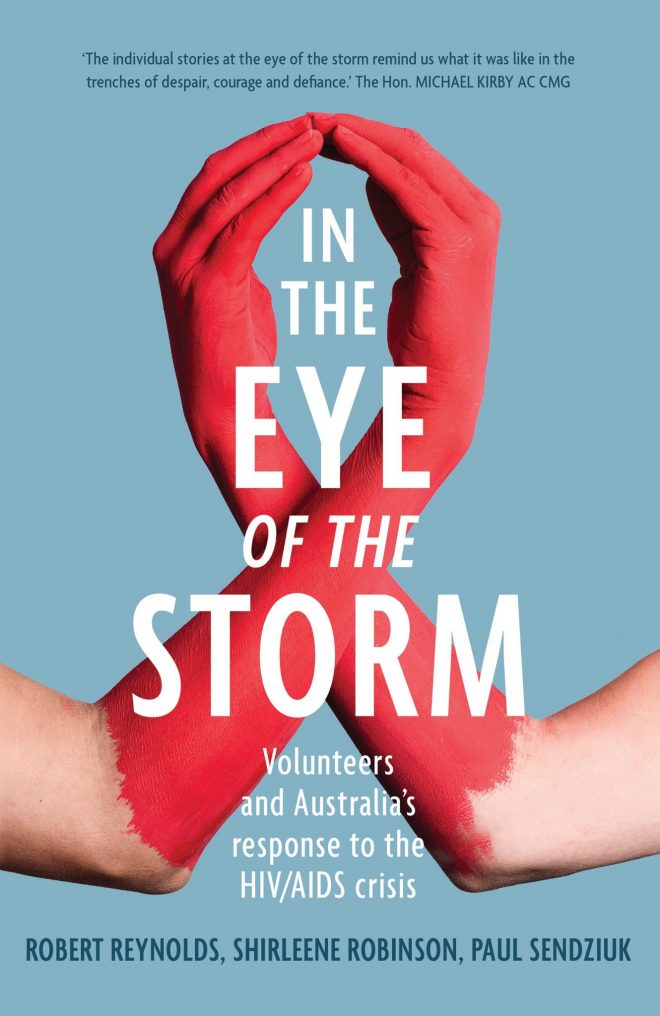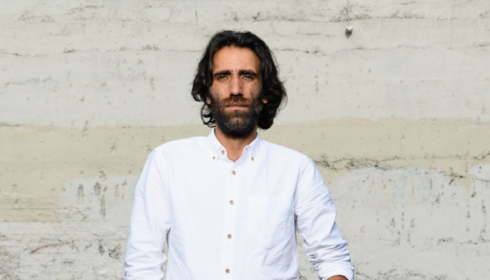

To read In the Eye of the Storm: Volunteers and Australia’s Response to the HIV/AIDS Crisis during another global health crisis is a strange experience. One is made aware of the disparities in the Australian government’s response to the two events. Despite far more people in Australia having died from AIDS-related illnesses than from COVID-19, it took the government six years from the first death of an AIDS patient to develop a National HIV/AIDS Strategy. When in 1985 the Victorian Aids Council (VAC) received $50,000 in government funding, this was considered a game-changing amount of money. The starkest difference, which In the Eye of the Storm chronicles through its narrativised interviews with twelve people who were volunteers during the epidemic, is that a significant amount of the labour that went into responding to the HIV/AIDS crisis – nursing care, staffing information hotlines, running needle exchanges, community education, management of organisations – was unpaid labour.
The history of this volunteering is also, therefore, a history of government neglect and prejudice. In this light, the triumphalist, even patriotic tone taken by the authors of In the Eye of the Storm towards the Australian government’s response is disappointing. It is mentioned multiple times that Australia’s response to the HIV/AIDS epidemic was considered one of the best in the world. In place of an actual appraisal of the response we are delivered glib rhetoric, with phrases like: “volunteering – helping out a mate – lies at the core of Australian identity”. However, it is only in the introduction, written by the three Australian academics who compiled the book and conducted the interviews, that we encounter such congratulatory political rhetoric. The interviewees themselves are more critical; one volunteer, Gay, declares that “I don’t have a sense of ever being acknowledged as a worker. Yet my labour had real value”. Another, Jim, denounces the Beattie Labor government cutting to HIV services in the early 2000s. A few times interviewees use the word ‘neoliberal’ to characterise the changes that occurred in the HIV/AIDS ‘sector’ – once known as a community movement – during the 1990s, including the “marginalisation of HIV-positive people within AIDS service organisations”. The irony is that once the state eventually did respond in a more substantial way to the crisis, the influence was managerial and bureaucratic, and was lamented by many of the volunteers in the book.
The interviews cover a diverse range of material, and the authors have taken care to ensure experiences in various locations and with different kinds of volunteering are included. The book features moving accounts of what it was like to care for dying loved ones and is worth reading for the humanising and affectionate qualities of these portraits alone. Most of the volunteers interviewed were gay men themselves, some living with HIV and some not. At the same time dealing with both the traumatic loss of people around them, they also had to deal with the marginalisation of their communities due to the stigma associated with the virus. More than one interviewee described the period as having felt like a war, the memorialisation of which is accorded little to no wider social importance in comparison to other mass tragedies.
The authors conscientiously highlight the caring role played by women, including lesbians who found themselves involved in HIV/AIDS organisations due to adjacent political struggles. Gay liberation groups such as the Homosexual Law Reform Society, the Daughters of Bilitis, and the Campaign Against Moral Persecution had been around for more than ten years before AIDS derailed the momentum towards sexual liberation and ushered in a new kind of political and activist ethos. In the Eye of the Storm is thus valuable as a historical account of the formation of HIV/AIDS institutions, chronicling the development of the various committees, councils, networks, and community organisations as they were being set up in the 80s and developed over the subsequent decades. This period has shaped both LGBT politics and public health today. The AIDS Action Committee was founded in 1983, an antecedent of the AIDS Council of NSW, now ACON. The Victorian AIDS Action Committee of 1983 is now known as Thorne Harbour Health. The structure of the wide-ranging interviews allows for discussion of this history alongside far more personal and emotionally involved anecdotes. The volunteers have especially poignant insights into the nature of care and illness, the burden of stigma and shame, and the power of solidarity. All of these lessons are particularly important at this time. The proximity in the book of personal testimony to political detail is fitting, for the nature of the crisis – as the volunteers describe it – was something that deeply touched and damaged the most personal parts of people’s lives, but was at the same time an immensely politicised moment in a wider social struggle – a struggle with collective solutions.


